5 Must-Have Google+ Circles

Google+ holds a treasure trove of features that brands can leverage to engage with their audiences, and one of the most overlooked features is "Circles."
Google's Circles enables users to filter the people they follow into categories. For consumers, this feature can help them sort the businesses they follow into different groups than other connections, like their family or friends. When leveraged correctly, Circles also has practical brand uses.
With Circles, businesses can group their customers and industry influencers into categories to make it easier to network with specific groups and share content that is highly relevant to those individuals. To help your company get started, check out these five must-have Google+ Circles.
VIP Customers
The first Circle brands should focus on building is one for VIP customers, otherwise known as brand advocates. Since these loyal customers are valuable to a company's bottom line and word-of-mouth marketing initiatives, maintaining relationships with them should be a top priority. Luckily, taking a little time to simply +1, comment on and share their posts will go a long way in efforts to sustain and improve relationships with these customers.
Customers
Along with VIP customers, brands should also create a Circle for their everyday customers. In doing so, brands can create and share blog posts, for example, that are meant to develop stronger, more valuable relationships or increase these shoppers' brand or product awareness. If successful in networking efforts, these customers have the potential to become brand advocates, in which case the brand can easily switch them to its VIP Circle.
Brand Partners
Just as maintaining relationships with VIP customers is important, so is maintaining relationships with brand partners. This Circle, however, will likely vary depending on your business and its unique relationships. For example, a skincare brand may want to fill this Circle with retailers that sell its products. In doing so, the skincare brand will be able to interact with the retailers, thus increasing its visibility and strengthening its relationships with these brand partners.
Conversely, a restaurant may want to fill this Circle with businesses from around the local community. In this scenario, the restaurant will be able to build relationships with its business neighbors and increase its visibility in the local community, which could lead to new business opportunities in the future (e.g. a neighborhood sale or shop local events).
Industry News
Having a Circle dedicated to industry news sources is a good way for brands to not only stay informed, but also find relevant content to share with their followers. After all, content is king, and the more useful information brands share with their followers, the higher engagement rates they are likely to receive. Moreover, brands may want to include industry bloggers into this Circle. Not only are these connections likely to post sharable content, but interacting with them puts your brand on their radar, which can open the door up to possible coverage opportunities.
Team Members
Creating a team member Circle will enable brands to keep track of their employees. While interacting with this Circle shouldn't be as high of a priority as interacting with other Circles (like VIP customers), it is a good way to monitor the type of content employees are posting and to see if they are sharing company news with their Google+ connections. Marketers and business owners shouldn't forget that their employees are their best advocates.
Keep in Mind...
While these five Circles are a great start, brands can take these categories a step further by sorting them down even more. For example, the Industry News section could be sorted into "bloggers," "local news" and "national news." By segmenting Circles into narrower categories like these, brands can prioritize the time they spend interacting with very specific groups.
It is also important to note that although Google+ members cannot see which Circles you have sorted them into, they do have the ability to view the people your brand follows in the "about" section of a brand's Google+ Page. That said, brands can keep some (or all) of their Circles private by editing their Circles' visibility. It's a good idea to keep at least VIP and Customer Circles private so that competitors don't try to steal customers away.

Subscribe to Our Newsletter!
Latest in Marketing










